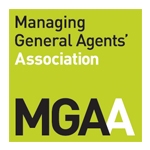Picture This
Creative differences
Remember the 1978 Blondie release of this name. It hit the UK charts and for its three writers, Debbie Harry included, it has churned out regular royalties for them ever since. Few would argue against this fair reward for their artistic creativity. But what if you were not a struggling music artist but a painter? Just as artistic, just as creative but once you’ve sold a painting – perhaps for a song (no pun intended) – to pay the rent; is that it? No ongoing royalties no matter how many times it changes hands at an ever-inflating price in your lifetime? Hardly seems fair. Probably because it isn’t.
Levelling the field
Enter a new intellectual property right; the Artist’s Resale Right (“ARR”) that affords the creators of original works of art, including paintings, sculptures and collages, the right to a royalty when their work is resold through a “qualified intermediary” which includes an auction house or art dealer. This right to a royalty lasts for the lifetime of the artist and for 70 years after their death. This new law first emerged in 2006, despite opposition from the UK Government, and was amended to its current form in 2011. ARR applies to the sale of artworks in the European Economic Area (EEA). Before you ask – yes – this law will survive post-Brexit. It even gets a mention in the Withdrawal Agreement.
Collection
The right to a royalty is, arguably, only as good as the ability to collect and distribute it. Two agencies administer the collection of artists’ right fees in the UK:
- The Design and Artists Copyright Society (DACS);
- Artists’ Collecting Society (ACS).
It works like this. When selling a work that qualifies for ARR (more on this later) auction houses and dealers have responsibility to pay the correct amount and calculate the correct exchange rate at the time of sale. To this effect both agencies helpfully provide online calculators and checking guides for the retailers. ACS and DACS both charge a 15% administration fee which is taken from rights payments received.
Exemptions and Royalties
No royalty is triggered if the artwork was bought directly from the artist less than three years ago and is being resold for 10,000 Euros or less. Sales between private individuals and collectors, to the public or to non-profit making museums are similarly exempt. Hence you may see on auction house websites advertising art works for sale the words “ARR may apply”. It gets more complicated. There’s the sliding scale of royalties when it does kick-in:
- 4% up to 50,000 Euros;
- 3% between 50,000 and 200,000 Euros;
- 1% between 200,000 and 350,000 Euros;
- 5% between 350,000 and 500,000 Euros and
- 25% in excess of 500,000 Euros.
All of which is subject to a royalty cap of 12,500 Euros on any single sale and a minimum sale price of 1,000 Euros below which there’s no royalty.
Qualifying artists must be a national of the EEA but when they are dead, their heirs and beneficiaries may be of any nationality.
Parallel Lines?
So, does it work? Are creators of physical works of art treated similarly to musical artists like Ms Harry? Artists Lawyer Rudy Capildeo claims:
“…musicians, authors and filmmakers receive royalties, artists too should be able to share in the benefits that their work brings to others”.
The numbers look promising. The two collection agencies say they have distributed in excess of £90m since 2006 and have represented over 100,000 artists and their estates and have re-invested nearly £100,000 back into the artists community in the last three years.
The art trade doesn’t like ARR arguing it stifles the market delivering a disadvantage the US and Asia doesn’t have to suffer. But that’s irrelevant if it works. Perhaps the most telling comment is from a 2014 Art Market report whose author, Dr McAndrew said:
“ARR has done nothing of significance to help artists on lower incomes or early in their careers, when they are in most need of financial support, even though they were its intended beneficiaries. It has been the heirs of recently died, highly sought after and well-known artists who have gained the most.”
If you’re a creative sort, picking up a pen or a guitar before a sable brush may pay more bills in the long term…One Way or Another (music and lyrics by D. Harry and N. Harrison 1979…)!
Murray Fairclough
Development Underwriter
Opus Underwriting Ltd.







